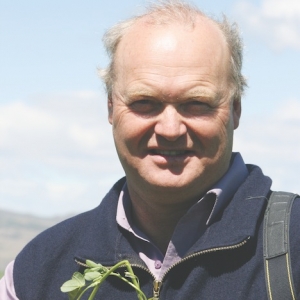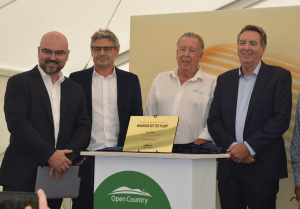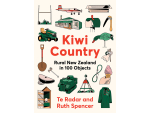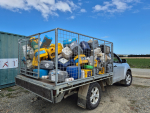And if you’re a dryland farmer and you haven’t got any lucerne yet, then you should consider putting some in, he says.
The reason is the combination of the crop’s water use efficiency and nitrogen fixing ability. Deep roots mean lucerne can access water reserves other forage can’t reach, and rhizobia-packed root nodules fix all the nitrogen the plant needs from the air, so there’s no need to apply urea or other forms of fertiliser nitrogen.
“Wherever you see urine patches in grass that’s showing you the rest of a paddock is nitrogen deficient,” explains Moot.
Consequently growth is compromised but water is still being sucked out of the soil by the grass at much the same rate, so less drymatter is grown for the water available.
In contrast, lucerne grows more drymatter per unit of water in spring because it is not nitrogen limited, and it has more water available to it because it reaches deeper into the soil.
Provided grazing or cutting is timely, the forage is also high quality and stands of the crop will last years, if not decades, with good weed control.
Lack of winter growth needs to be allowed for in the south, and warmer but wetter winters in the North Island can make weeds more of a challenge, but the crop is still likely to boost profits wherever lack of rain limits summer pasture production.
“There’s more now than ten years ago but there’s still not enough. Spring and early summer is the most important time for the dryland farm and lucerne is the most efficient plant you’ve got for producing feed during that period,” he stresses.
The reason Moot says stock should be “into it” once stands reach 15cm is rotational grazing. Stock perform best if kept on the crop, rather than switched on and off it, and if they start the rotation at 15cm, by the time they reach the end of the “round” stands will be getting towards 35cm.
At that height don’t force them to chew it to the deck, he stresses. “Squeeze the stem to feel where it’s gone hard: you don’t want them eating into that.”
Typically that will be the bottom 8-10cm of the plant if it’s reached 35cm when grazed. Another way to judge where the stem turns hard is to see how far down it bends freely. “Don’t go below where the stem gets stiff.”
As a rule of thumb every 10cm of height equates to a tonne of drymatter in a spring stand of the crop. In autumn it’s more like 600kg, as the plant is pumping more energy underground, building up its reserves for the following spring.
Allowing those reserves to be replenished at some point in the season is essential if stands are to persist, and following season production maintained. New stands need to put at least six tonnes of growth underground before they reach their above-ground production potential.
“So if you get 15t of growth in the first year, 6t of it will be below ground and 9t will be above.”
For those cutting and carrying, or ensiling lucerne, take the first cut before flowering, at 45-55cm, so the crop doesn’t lodge. High protein content means an innoculant and/or addition of a starch or sugar source, such as Italian ryegrass, or even kiwifruit pulp or potatoes, is needed to aid fermentation of baleage or silage.
“If you’ve got irrigation, don’t irrigate it until
at least 10 days after cutting because if you do, all you’re doing is wetting the soil and allowing a flush of weeds to germinate while the crop has no leaf to shade them out, so you’re better to wait.”
Potash removal needs to be watched with repeated cuts, particularly if manure or effluent isn’t returned to the paddock.
“You need to herbage test to check if there’s enough potash and it’s best to do that in spring when the crop’s growing at its fastest. A cut a year doesn’t usually cause a problem but where you’re taking two or three you’re starting to mine the potassium.”
Potassic super should be used to replace potash in such situations but straight superphosphate is all that’s typically needed where crops are mainly grazed.
Bloat, particularly in cattle, and occasionally scald for lambs, are animal health issues to be aware of with lucerne, particularly in a moist spring. “I wouldn’t expect many problems in the South Island this year because it’s been dry and growth has hardened off early,” notes Moot.
Anecdotally weaner calves are most at risk so if they need to go on lucerne a common practice is to mix them with ewes and lambs, allowing the ewes and lambs a first pick at the crop. “Often people move them a day after the ewes and lambs.”
A bloat capsule for yearling or older cattle is advised, given their higher value.
Aphids are the main pest but rarely cause problems in grazing rotations as they’re eaten out of the crop. If numbers build in cut-and-carry crops be prepared to apply an aphidicide post cutting to protect regrowth.
“But they’re still not the issue they were in the 1980s because there’s less lucerne around, we have more resistant cultivars and there’s more grazing than there was then.”

















